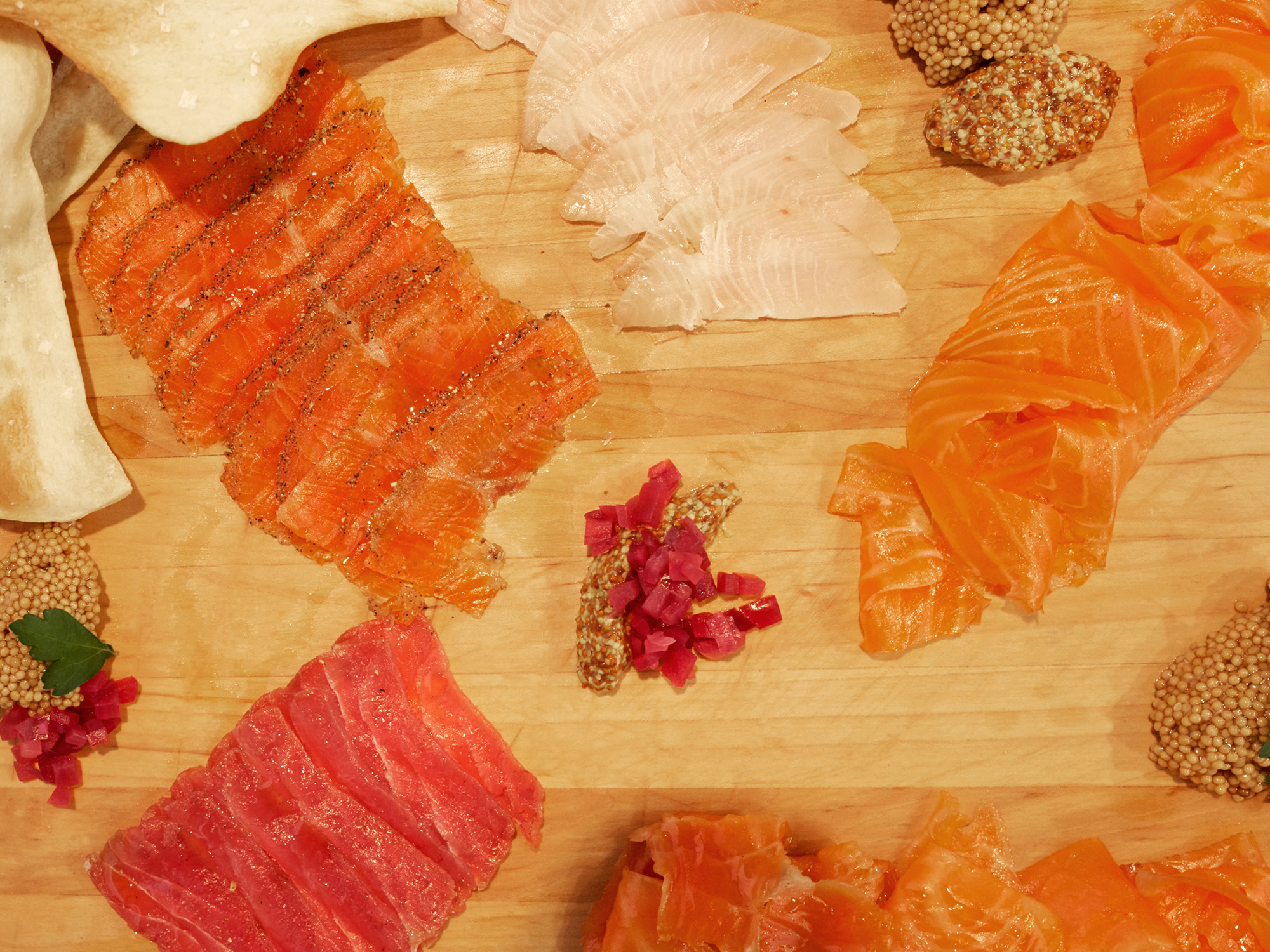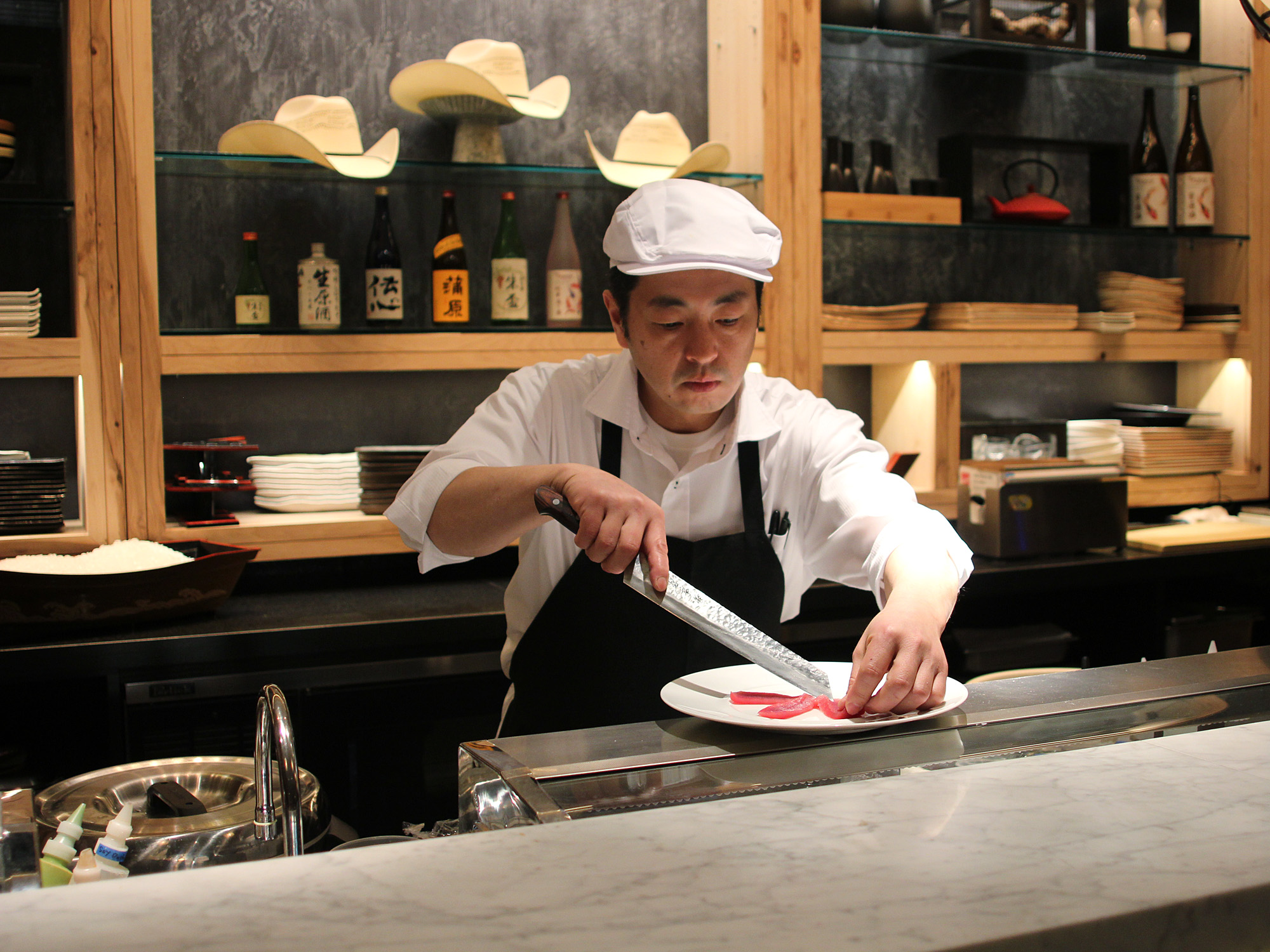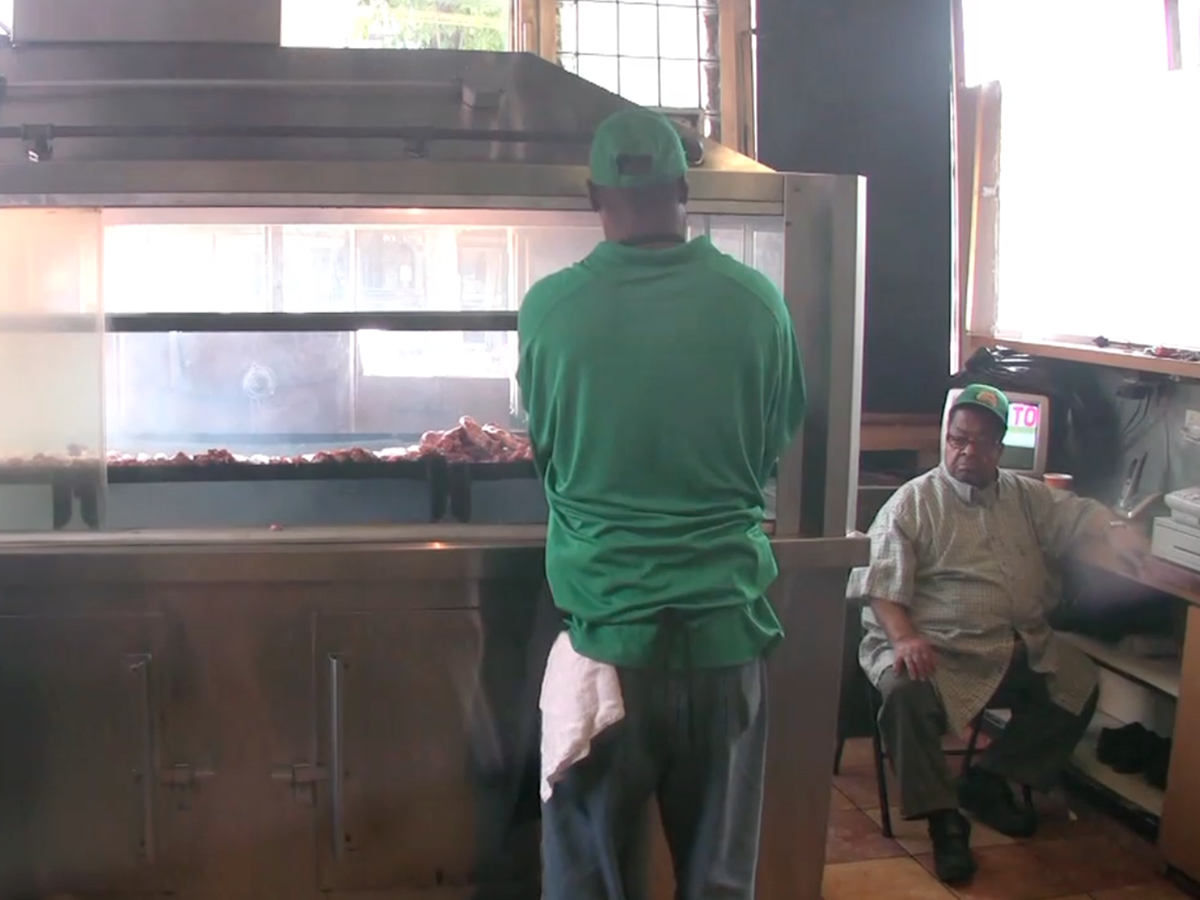ENGLEWOOD HAS A SCARY REPUTATION in the headlines, the center of Chiraq, but be there around lunchtime and it seems less like a threatening environment than just a dormant one. The signs of life of most Chicago neighborhoods—small businesses and people, mainly—are missing; it feels less like part of a city than like a small town that’s been abandoned. (With the population down two-thirds since the 1960s, this isn’t an inaccurate observation.) There’s just nothing there—in particular, nothing to eat.
Howard Bailey isn’t from Englewood—he went to Lane Tech for high school, and worked in Wicker Park bars and restaurants when that neighborhood was first turning around. He owned Slick’s Lounge, a popular nightclub on Goose Island, in the 1990s and early 2000s. But he found himself in Englewood when a relationship ended and, needing a place to live, his godfather offered him a house he owned there to stay in. “I just needed a place to regroup, and every time I regrouped and tried to get out of Englewood, something happened that just dragged me back, like the housing market crash of ’08,” he says. “I keep saying I got stuck here, but it wasn’t really getting stuck—it was divine intervention, or whatever you want to call it.”

Well, first it was something more down to earth than that—Bailey noticed that he was putting on weight, because the only take-out food available in the area was fried food from the small number of stands in the neighborhood. “I love fried food just as much as the next American,” he says. “But I do know that day in, day out, it’s not a healthy choice. I found myself after living here for five or six years, heavier than I was used to, because I was limited in my options.”
And so he opened the Dream Cafe and Grille in early 2015, in a strip mall whose only other inhabitant is a laundromat, on 61st just east of Halsted. In other neighborhoods it would be just a neighborhood cafe, one of many, but in Englewood “Kids come in and see that we have tables and chairs and they’re like, ‘Mister, this is like a real restaurant!’ And it is, because nobody’s ever made them a hamburger out of fresh meat, hand-patted just for them before, and they sat down at a table and ate it.”
“That was another thing I saw, there was no place to sit down and break bread. Sit down and get on wi-fi. All the things that we take for granted, in every other Chicago neighborhood.”
The menu covers basics—chicken (cooked six different ways, from grilled and fried to jerk and Moroccan style), fish from tilapia to salmon and perch prepared similarly, pastas and side dishes (including the ubiquitous soul food collard greens and mac and cheese). The chef is Russell Moore, who worked for him at Slick’s Lounge (and was a contestant on PBS’s Cooking Under Fire), while the desserts come from another chef and cooking teacher he knows. Though in the end, he says the menu is a “hodgepodge of everybody’s family recipes and so on. My first job was working in the kitchen, and I told myself I would never work in the kitchen again. But I find myself working in the kitchen almost every day here. I’m very hands-on, although I don’t like to be.”
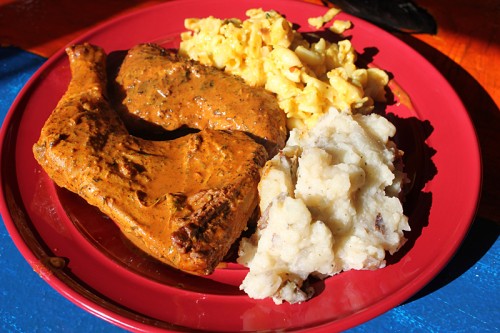
Moroccan chicken with mac and cheese and mashed potatoes
Okay, so it’s a nice, handcrafted corner restaurant menu, and mostly not fried. Fair enough—but then, why is the thing that he advertises the most on social media, and that certainly winds up as part of every takeout order, egg rolls? Egg rolls are fried food, aren’t they?
Kids come in and see that we have tables and chairs and they’re like, “Mister, this is like a real restaurant!” And it is, because nobody’s ever made them a hamburger out of fresh meat before.
“Ah, that’s an old family secret, man! Brought ’em from Africa!” he laughs. The answer here also goes back to Slick’s Lounge. “We were one of the few bars that didn’t do bar food. We did real food, American comfort food,” he says. “One of the things we had on the menu was a lobster egg roll.”
“When we were getting ready to open, we wanted something that was a gateway food. Because we knew people were used to having fried objects, so we thought, what if we took something healthy and deep-fried it? To get the greens back on their palate. A lot of these kids, they don’t grow up having greens on Sunday at their grandmother’s house.”

Jerk chicken, mac and cheese and greens egg rolls with dipping sauces
So the egg rolls are the wrapper for what he considers classic African-American foods that too many kids don’t know these days—jerk chicken, greens and mac and cheese. They may be fried, but it’s to a higher purpose. “We want to be the healthy alternative, but then people come in and they’re like, we want the cheesecake, we want the egg rolls. A lot of people are like, everything was good but the egg rolls… we literally get people coming in for the egg rolls,” he says. “I always say, crack was the downfall of Englewood in the 80s and 90s, and the egg rolls are… the new addiction in Englewood to help bring it back.”
“You were going to say they’re like crack, weren’t you,” I say.
“I almost did but then I realized I shouldn’t say that,” he laughs.
“BASICALLY, OUR MISSION’S KIND OF simple. Bring back fresh food, back to the neighborhood,” he says. “When you’re in a certain income class, you can afford to say, we’re eaten junk food long enough, we need some real food. You can make that decision. But when you only have five dollars in your pocket, you have to go to McDonald’s for the value meal or Subway for the $5 footlong. That’s the only thing that’s available in that neighborhood.” His enthusiasm rises a notch toward preach it, brother. “You should be able to get a decent meal for $5. It might not be the most gourmet, but you should be able to get a good, fresh, hot meal for five bucks anywhere in Chicago.”
He doesn’t think he’s the only person who ever had this idea for Englewood—”A lot of people have that dream, the American dream.” But when the only food choices are coming from outside the community, that can lead to the kind of tension that you sometimes see between black neighborhoods and store owners of other backgrounds.
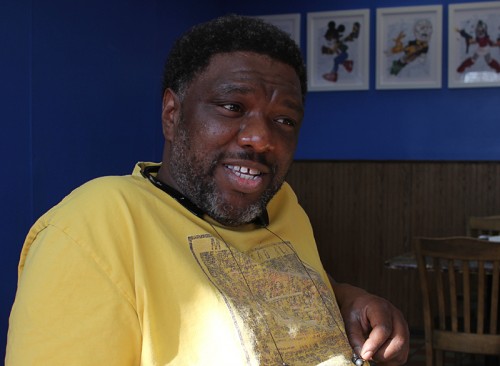
“We have a lot of people in the neighborhood, that don’t eat the food that they serve in the neighborhood,” he says. “And that imbalance becomes too much, on a lot of different levels. I’ve gone in my Chinese place to get something and they’re in there eating vegetables. And I’m like, that’s what I want! And they laugh. They don’t know what to do when somebody comes in and says, ‘No, I know what that is, I know exactly what that is, and I want that, the healthier food you eat.’ They’re used to us coming in and just saying, give me number 5.”
That’s why, beyond serving healthier food choices, he’s also committed to promoting African-Americans in Englewood growing their own food. He serves on the board of Growing Power, the Milwaukee-based non-profit that operates urban farms in underserved neighborhoods. “The whole urban gardening movement is important to me, especially with the youth, because they need to have vegetables as fresh as possible, as nutrient-packed as possible. Unfortunately, when you’re getting stuff from California, from Mexico, or wherever, if it’s four or five days from the time you pick it to the time you can get it to somebody, it’s almost too long.
“Historically, my people don’t want to farm or garden—we were forced to do it so long. Embedding doing it in these kids is important, because it’s life.”
“Englewood’s going through a resurrection,” he says. “They’ve been working on the infrastructure for years. Out of all the Chicago neighborhoods, it has very solid infrastructure in terms of transportation, the community college, we have Whole Foods coming. So everything is there, it’s just, now it’s time to activate it and get the community involved in what’s going on, encourage more Mom and Pops to open up and follow their dreams.”
“Even a couple years ago, I was thinking about making my move back to what I called civilization. But then I realized that Englewood is a lot like Wicker Park was in the late 80s, early 90s. The same energy that kind of took Wicker Park over the edge could be used to bring Englewood back to what’s a normal Chicago neighborhood.”

Michael Gebert is the editor of Fooditor, and now dreams of jerk chicken egg rolls.
Latest
Join the Discussion
After you comment, click Post. If you're not already logged in you will be asked to log in or register with Disqus.




